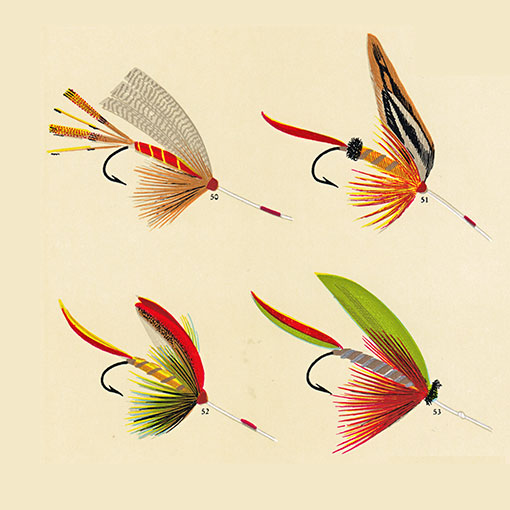For the month of August, a series of guest posters will be filling in on DWL with daily posts. This week’s posts come to you from the talented folks of Studio 254: designer and illustrator Will Bryant, illustrator and educator Kate Bingaman-Burt, designer Clifton Burt, designer Tina Snow Le and artist, designer and educator Jason Sturgill. Enjoy!
Claudius Aelianus was the design blogger for 2nd century Rome. Though limited to the rudimentary publishing tools of his day—as we are limited to ours—he “posted” about design that caught his attention, like this observation while on the banks of the Astraeus River:
..they have planned a snare for the fish, and get the better of them by their fisherman’s craft. . . . They fasten red wool. . . round a hook, and fit on to the wool two feathers which grow under a cock’s wattles, and which in color are like wax. Their rod is six feet long, and their line is the same length. Then they throw their snare, and the fish, attracted and maddened by the color, comes straight at it, thinking from the pretty sight to gain a dainty mouthful; when, however, it opens its jaws, it is caught by the hook, and enjoys a bitter repast, a captive.
What he described then is what we know as the fishing fly, a designed object whose recipe combines equal parts beauty and violence; form and function. And what is design if not form and function working together to achieve a desired effect? In the case of the fly, the form—feathers, fur, and thread shape an imitation “to attract”, while the function—the hook, performs the second part of the task, “to ensnare”. They work together as a tiny fish-catching machine.
The design of each fly is purposeful, made to imitate a specific insect —or other food— that a fish is likely to feed upon. The compositions are a perfect balance (yes “perfect”). The thread, feathers, and fur are arranged to suggest the wing, the tail, the thorax, of the imitated species. To remove one segment of the fly would be to disrupt it as a composition of biomimicry, thereby revealing it’s fraudulence to the already skeptical fish.
Often, when we speak of a “timeless” design, we’re speaking of, perhaps, a mid-20th Century lamp, a chair, or similar domestic object; things that are relatively recent. However, fishing flies are at least 2000 years old and their design has needed little change in that time. A replica of an ancient fly would catch as many fish today as it did then. Flies are members of a very small club of truly timeless designs.

Get 300+ Fonts for FREE
Enter your email to download our 100% free "Font Lover's Bundle". For commercial & personal use. No royalties. No fees. No attribution. 100% free to use anywhere.
The images here are watercolors by Charles F. Orvis, some of the most beautiful renderings ever made on the subject. They are from his 1892 book “Favorite Flies and Their Histories”. These pages were lithographs using 12 different chromium inks layered into a near-photographic quality. These images and many more can be found at artdeco’s Etsy shop.
Many of the flies in Orvis’ book remain popular on streams today. The Royal Coachman, for example, named after its originator who happened to be Queen Victoria’s coachman (when he wasn’t busy fly fishing.) Others with peculiar yet memorable names include the Yellow Humpy, the Yellow Sally, the Parachute Adams (one of my favorites), the Chernobyl Ant (about that name), and the boldly named Irresistible.
And later this week, I’ll be on Oregon’s Salmon River with my current favorite fly, the Lime Trude. Wish me luck.


